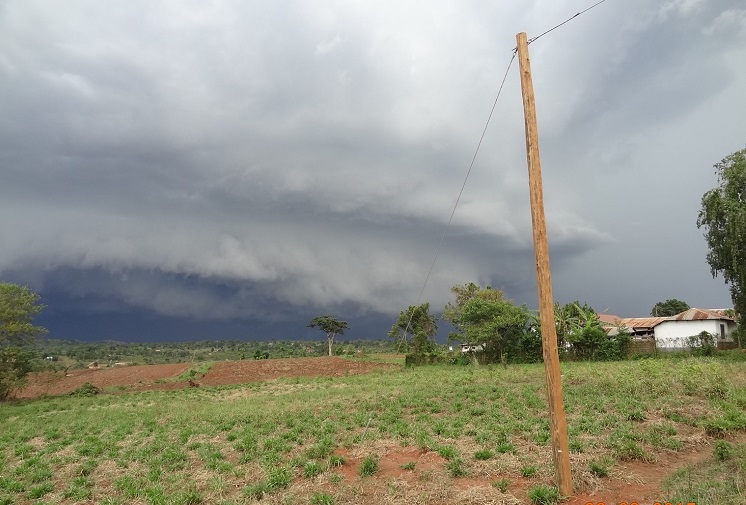Challenges and prospects for improved weather and climate services in Africa

Approaching heavy tropical storm in Uganda on March 28, 2015. The wall cloud in the left half of the picture indicates strong thunderstorm gusts
Africa is and will be particularly affected by climate change in the coming years as a result of increasing extreme weather events, especially due to the increased vulnerability of people and economies in the region. In contrast, around half of the African population has no access to early warnings of dangerous weather events, and the significant improvements in weather forecasting in the mid-latitudes and the resulting services have not yet been materialized on the continent. On the one hand, theoretical predictability in the tropics is reduced compared to the mid-latitudes due to small-scale chaotic precipitation, and on the other hand, the international community has spent billions on climate services for the region. However, the needs of African scientists should be listened to if these investments and services are to be effective and sustainable.
An article published in the journal Nature, led by African and involving IMTRO scientists, identifies a number of the challenges to improving (extreme) weather forecasting and outlines prospects for sustainable improvement. On the one hand, the potential of weather and seasonal forecasts in the tropics is not fully exploited due to a lack of understanding of the scientific basis of weather systems. On the other hand, the data basis on the continent is more than poor compared to Europe, for example. "Organizations such as the Intergovernmental Panel on Climate Change, the World Bank and the United Nations have spent many millions of euros on delivering weather radars, weather or weather balloon stations to African countries, but only a few of them have delivered the necessary data in a sustainable way because there is a lack of investment in their operation on the ground," says Andreas Fink, one of the co-authors of the study. "Another problem that has persisted for decades is the lack of free access to data collected by African weather services for scientific purposes," Fink continues.
The article points out that it is not enough to prescribe solutions that work in the global North. Improving the availability of the currently poor weather forecasts for Africa does not automatically lead to better early warnings. Sending more weather stations and radars to Africa will have no impact on data availability unless we invest in African capacity and capability to maintain the equipment and use the data they produce.
"The experience of the past decades teaches us that any new weather and climate service must be developed in a co-design and co-creation approach between scientists and decision-makers," says Prof. Knippertz, another co-author of the study from IMKTRO. "Care must be taken to ensure that new prediction methods are not only created with minimal computational effort in relation to the prediction quality, but also that the methods are owned by African institutions and can also be further developed by them," says Prof. Knippertz. With regard to the first aspect, IMKTRO is currently developing computationally efficient forecasting methods using statistical approaches and artificial intelligence methods. With regard to the second aspect, IMKTRO is working with a long-standing research partner, the University of Leeds, and the first author of the Nature study, Dr. Lamptey, who works closely with the Ghanaian weather service, to implement new, less computationally intensive methods of short-term forecasting in Africa. Moreover, IMKTRO will lead an African-German consortium that aims to implement new rainfall and especially drought forecasting methods on weekly to monthly time scales in southern Africa using a co-design approach.
